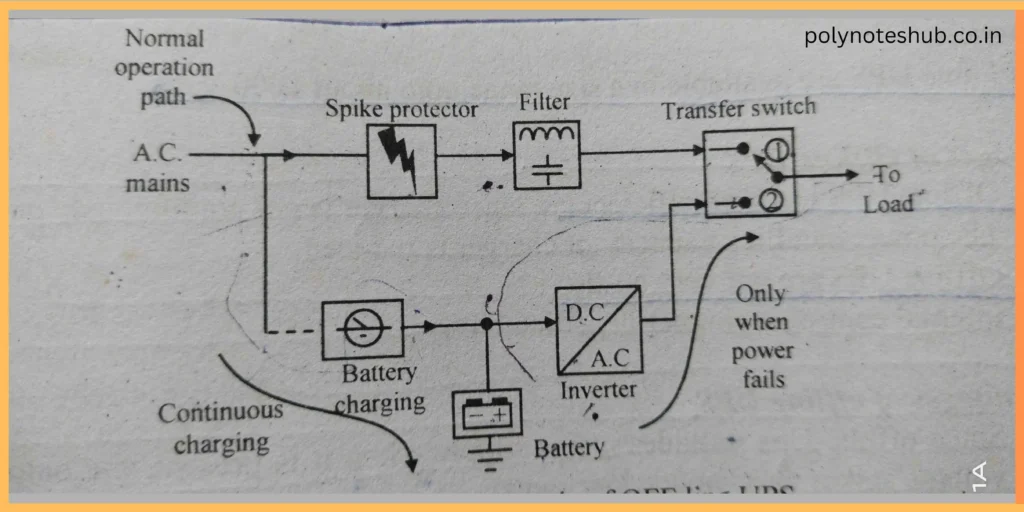What is Offline UPS?
In industrial electronics, an Offline UPS (Uninterruptible Power Supply) is a type of power backup system designed to provide temporary power during electrical outages or fluctuations. It is also known as a Standby UPS. The primary function of an Offline UPS is to ensure continuous and uninterrupted power supply to critical equipment or processes in industrial settings.
The Offline UPS is also called Standby UPS. In this type of UPS, the primary power source is the main power and the secondary power source is the battery.
Block Diagram of Offline UPS

Working Principle of Offline UPS
In this UPS, the battery and inverter are normally not supplying power to the load. The battery charger is using the line power to charge the battery but battery and inverter are waiting in standby mode till they are needed. Hence, the UPS is called Standby UPS. As main line is the primary power source, it is also called Line Preferred UPS.
The spike protector and filter are used to filter the line noise and surges and to protect the loads from severe mains conditions.
When the A.C. mains power goes out, the transfer switch detects it and automatically switches from position 1 to 2. Thus battery starts supplying the load through an inverter. The battery now starts to run down as there is no line power to charge it.
As seen, every Offline UPS requires a finite time to transfer the switch from position 1 to 2 and such a transfer can not happen instantly. This time is called transfer time or switch time. The units supplied by UPS have some hold-up time means, they can hold the power for a fraction of a second when the mains fail.
Specifications of Offline UPS
- Power Rating: 500 VA to 2 kVA.
- Output Voltage: 230V
- Backup Time: 30 mins or more.
- Transfer Time: 5 ms
- Efficiency: Greater than 85%
- Output Frequency: 50Hz
- Battery recharge time: 4 hours.
- Output Waveform: Sine wave
Advantages of Offline UPS
- It has higher efficiency.
- These are not costly.
Disadvantages of Offline UPS
- Output is not perfectly reliable.
- The output contains Voltage Spikes, Blackouts, and Brownouts.
Applications of Offline UPS
- Used in Computers, Printers, Scanners etc
- Also used as Emergency Power Supply.
Conclusion
In conclusion, Offline UPS systems are essential components of industrial electronics, providing a reliable and cost-effective solution for ensuring uninterrupted power supply. By seamlessly transitioning to battery mode during power outages or fluctuations, these UPS systems protect critical equipment and processes from potential damage and data loss. With their simple design, efficient operation, and numerous advantages, Offline UPS systems continue to play a vital role in keeping industries running smoothly and safeguarding their valuable electronic assets. For updates stay with PolyNoteshub, the one-stop solution for diploma engineering notes syllabus wise.
Read More
- What is Online UPS?
- Block diagram and working of Online UPS.
- Write a short note on SCR.
- About DIAC. Construction and Working.

